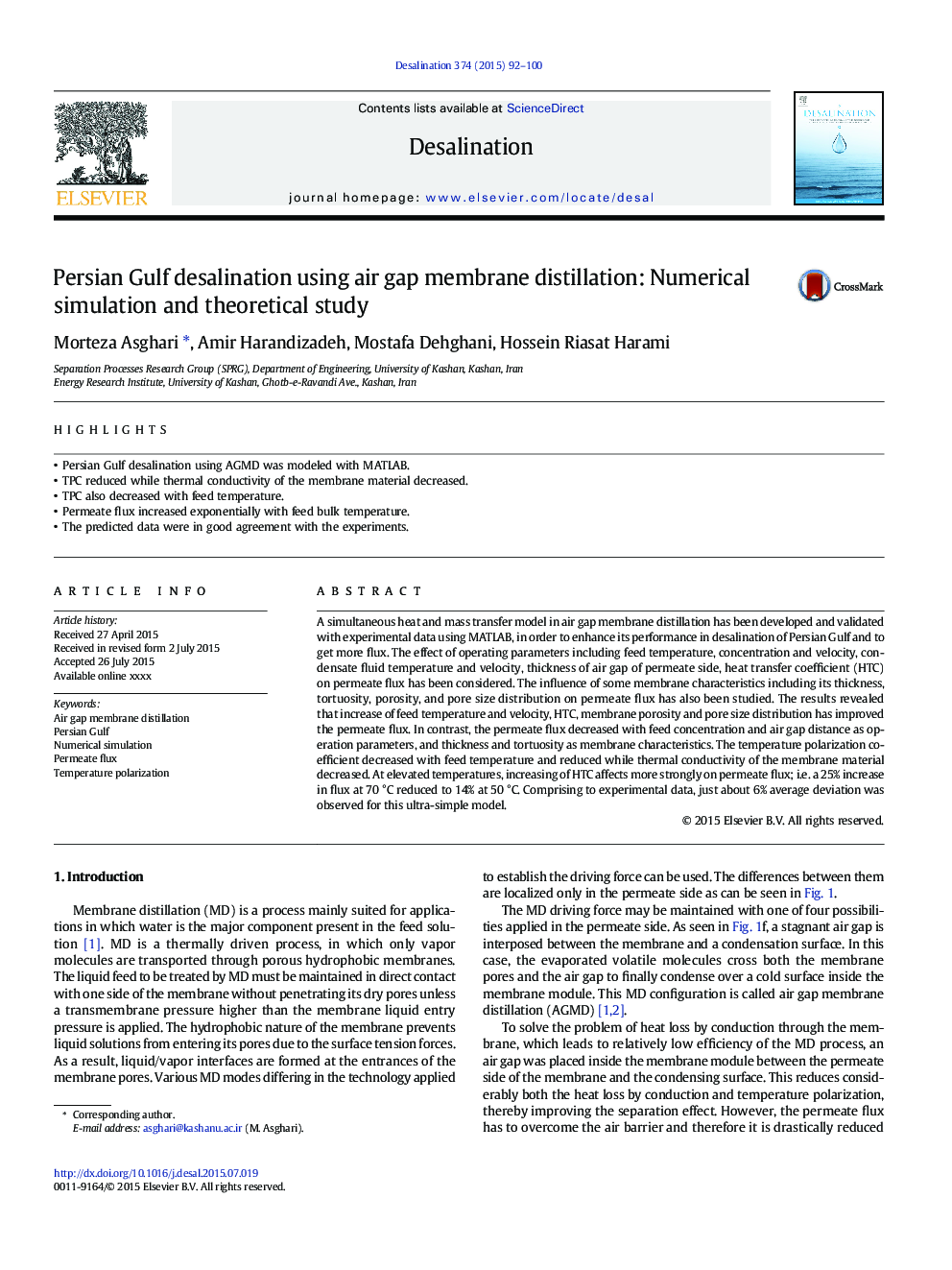| Article ID | Journal | Published Year | Pages | File Type |
|---|---|---|---|---|
| 622990 | Desalination | 2015 | 9 Pages |
Abstract
A simultaneous heat and mass transfer model in air gap membrane distillation has been developed and validated with experimental data using MATLAB, in order to enhance its performance in desalination of Persian Gulf and to get more flux. The effect of operating parameters including feed temperature, concentration and velocity, condensate fluid temperature and velocity, thickness of air gap of permeate side, heat transfer coefficient (HTC) on permeate flux has been considered. The influence of some membrane characteristics including its thickness, tortuosity, porosity, and pore size distribution on permeate flux has also been studied. The results revealed that increase of feed temperature and velocity, HTC, membrane porosity and pore size distribution has improved the permeate flux. In contrast, the permeate flux decreased with feed concentration and air gap distance as operation parameters, and thickness and tortuosity as membrane characteristics. The temperature polarization coefficient decreased with feed temperature and reduced while thermal conductivity of the membrane material decreased. At elevated temperatures, increasing of HTC affects more strongly on permeate flux; i.e. a 25% increase in flux at 70 °C reduced to 14% at 50 °C. Comprising to experimental data, just about 6% average deviation was observed for this ultra-simple model.
Keywords
Related Topics
Physical Sciences and Engineering
Chemical Engineering
Filtration and Separation
Authors
Morteza Asghari, Amir Harandizadeh, Mostafa Dehghani, Hossein Riasat Harami,
